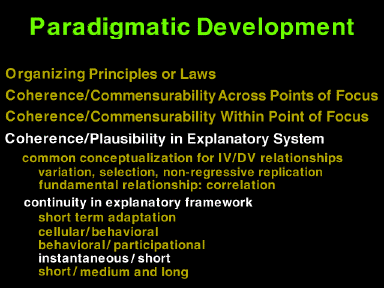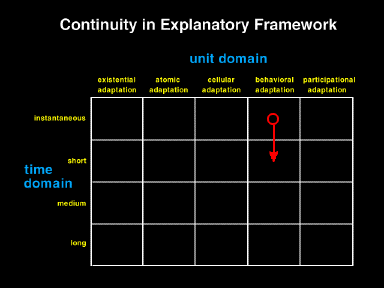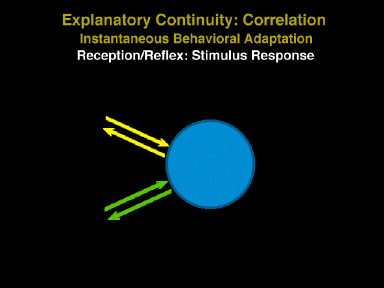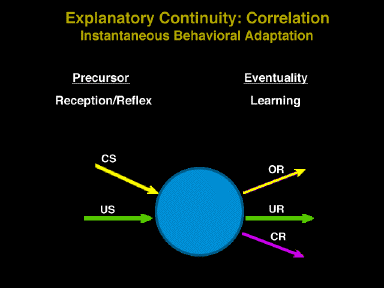 Slide 5-46
Slide 5-46

 Slide 5-46
Slide 5-46
So far we have been able to develop a common framework for the machinery and context of the functional relationships at the unit of analysis of most interest (behavioral adaptation).
Next, we must provide a coherent correlation-based account for continuity across time scales. We are interested in demonstrating the continuity from "precursors" to "eventualities." This is a somewhat arbitrary distinction because changing evolutionary pressures could shift the time scale of an adaptation to a longer scale and then back to a shorter time scale. The meaning of "precursor" and "eventuality" would then become cloudy.
 Slide 5-47
Slide 5-47
The first thing to do is to show that short-term adaptation could be selected from instantaneous adaptation through variation, selection, and nonregressive reproduction (i.e. short term adaptation could have adapatative advantage). From the opposite perspective the task is to show that short term adaptation could be seen as having emerged from instantaneous adaptation.
 Slide 5-48
Slide 5-48
Stimulus A (e.g. bell) produces response A' (e.g. orienting reflex). Stimulus B (e.g. meat powder) produces response B' (e.g. salivation). Neither relationship requires any ontogenic experience.
 Slide 5-49
Slide 5-49
The precursor of learning is obviously the reception of the stimuli. The eventuality of exposure to a correlated stimulus relationship is learning. Given the "reception" of warning stimuli, a "reaction" to functionally significant stimuli, and a correlation between the CS and the US: then 1) if preparation (i.e. some behavior prompted by the CS which makes the animal better able to deal with the US) has reproductive significance then the capacity to learn will be the eventuality in the species and 2) if preparation has had evolutionary significance then learning will occur in the individual.